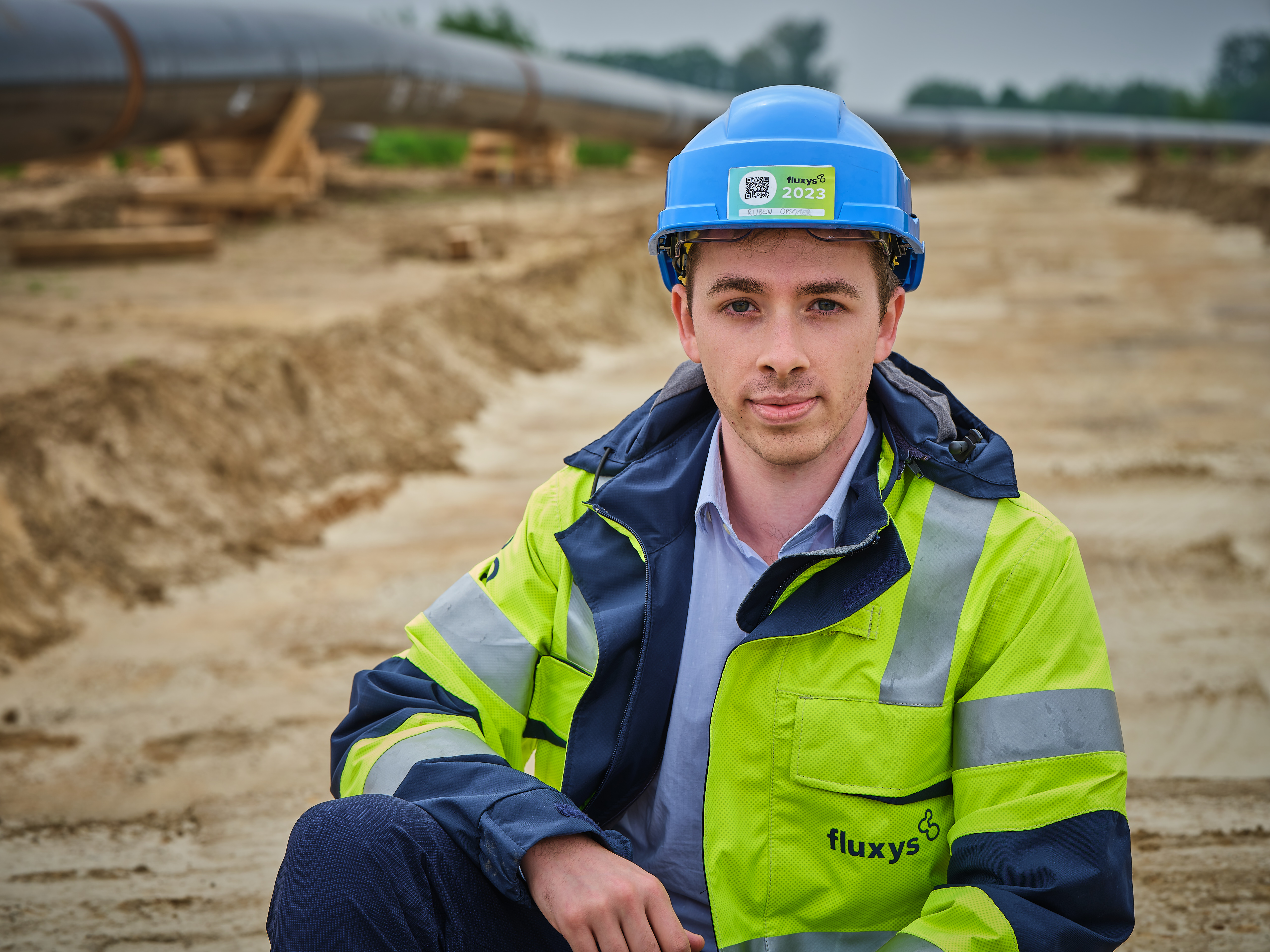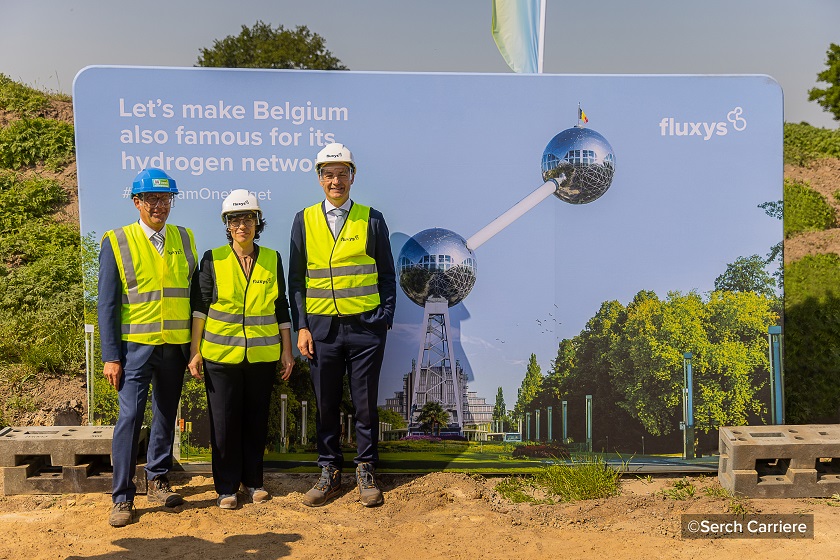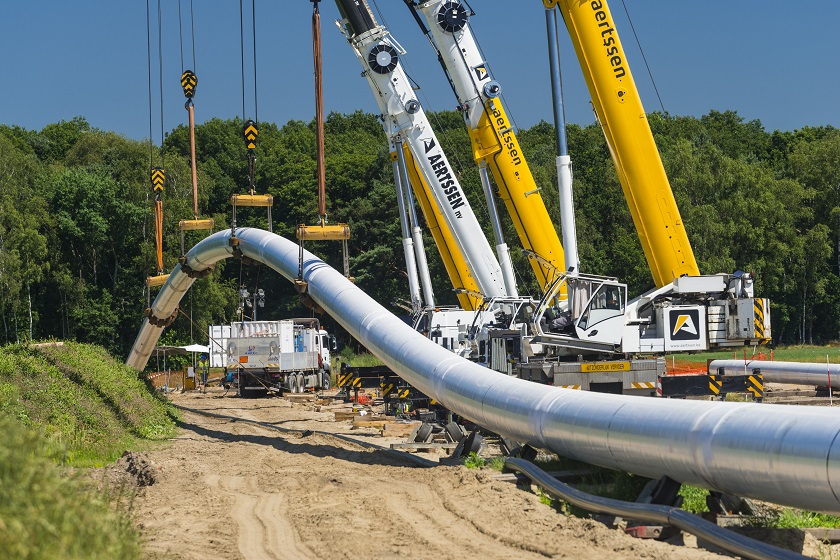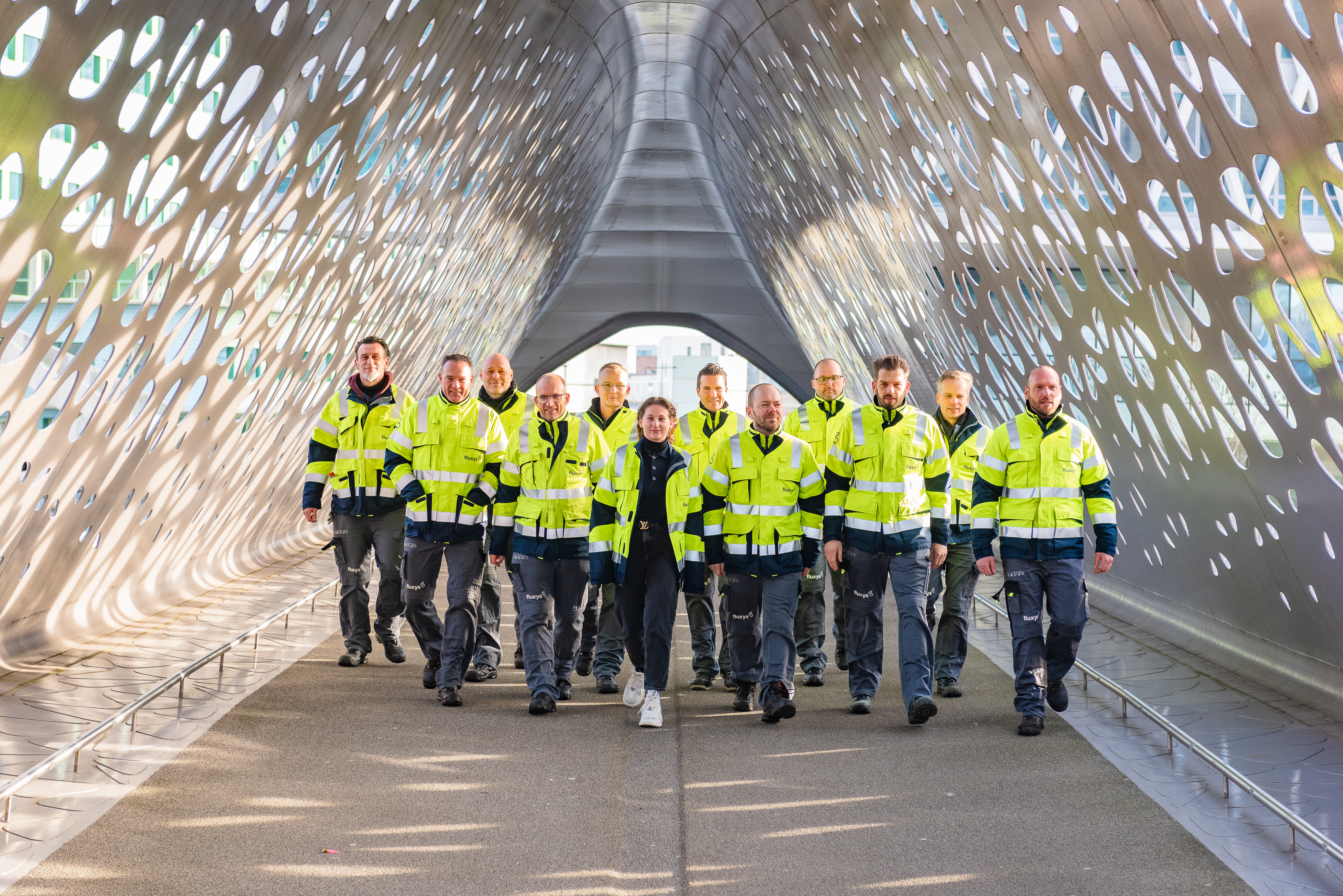H₂ Highway Zeebrugge - Brussels
A hydrogen network for the future
Everything and everyone needs energy to thrive and progress. Today, with 1,300 employees, we move natural gas via terminals and through 28,000 kilometres of pipelines in Europe, the Middle East and South America.
We are making this infrastructure fully ready to carry hydrogen and CO₂, as part of our aim to be the essential partner for speeding up the energy transition. This mission is getting under way with the construction of the H² Highway between Zeebrugge and Brussels. The pipeline is being laid in several phases: the first pipeline between Desteldonk (near Ghent) and Opwijk (near Brussels) was fully commissioned in early 2024, a next phase between Knokke and Evergem start is planned in 2025-2026. A final short section between Zeebrugge and Knokke will follow around 2030 to ensure synergy with other projects.
#H₂HighwayZBBXL

#H₂HighwayZBBXL in figures
97 kilometres of pipeline
Underground
Special engineering techniques under nature reserves, rivers, motorways and railway lines
5,500 pipes, 18 metres long and 1 metre in diameter
Weight of each pipe: 9 to 12 tonnes
Capacity: 20 GWh/h, equivalent to 20 nuclear reactors
Investment: €300 million
First phase completed in 2024, second phase planned for 2025-2026
What?
A single pipeline for natural gas and hydrogen
Hydrogen (H2) will increasingly be used in the future for greening society and industry.
The pipeline we are building today for natural gas is future-proof as it is able to carry hydrogen as soon as the market is ready.
This marks a key step in speeding up the energy transition and implementing the federal hydrogen strategy.
Additional capacity for the Belgian grid to simultaneously absorb the loss of L-gas from the Netherlands and supply the new power plants planned for 2025-26.
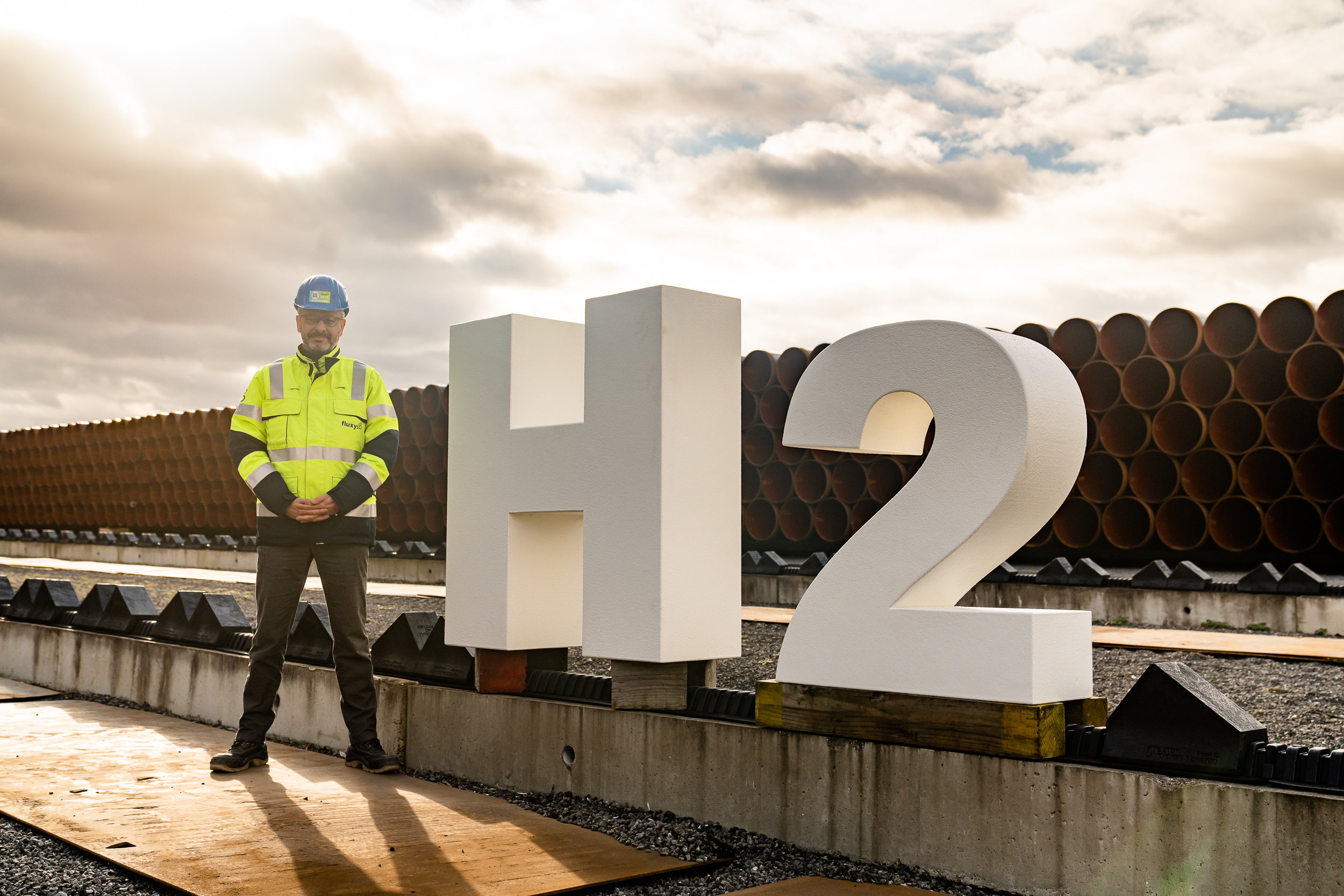
Why?
Reliable supply, even at peak times
Natural gas destined for Belgium and neighbouring countries is largely supplied via Zeebrugge. The additional pipeline between Zeebrugge and Brussels will increase offtake capacity from Zeebrugge by an amount equivalent to the energy generated by 20 nuclear reactors (20 GWh/h).
This will ensure that suppliers have as much capacity as possible to supply Belgium and neighbouring countries, even at peak times.
What's more, a pipeline that can also transport hydrogen shows our full commitment to renewable energy – a cornerstone of the European Green Deal.
How?
Minimal impact on people and nature
We are using special engineering techniques to cross nature reserves, rivers, motorways and railway lines.
Close communication with land owners and operators thanks to information sessions and a single point of contact at Fluxys. Before, during and after the works.
Farmers who are temporarily unable to use their land receive compensation. Access routes for water supply and livestock are left free at all times.
Fluxys is laying the new pipeline underground, parallel to the existing pipeline.
Construction of the pipeline takes due account of built heritage.
The site, trees and vegetation will be restored after the works. Together with Natuurpunt, we are planting 3.9 hectares of woodland in various locations. That means we are planting three times more trees than we need to remove.
Overall, we are minimising the impact on people and nature, as confirmed by the project environmental impact report.
Together
Our purpose is shaping together a bright energy future
Redesigning the energy system is a major challenge, but it can be done if we all work together. We carried out the first phase of this project in partnership with construction firm Denys, the second will be executed with Spiecapac, HAK and Antea group and, as always, in consultation with a large array of stakeholders:
- City and municipal authorities: Knokke-Heist, Bruges, Damme, Maldegem, Aalter, Lievegem, Evergem, Ghent, Lochristi, Lokeren, Zele, Berlare, Dendermonde, Lebbeke, Aalst and Opwijk;
- farming and agricultural organisations: Boerenbond, Algemeen Boerensyndicaat and Vlaams Agrarisch Centrum;
- environmental bodies: Natuurpunt, Flanders Environment Agency, Flemish Agency for Nature and Forests (ANB);
- road and rail bodies: Flemish Agency for Roads and Traffic (AWV), Infrabel.
